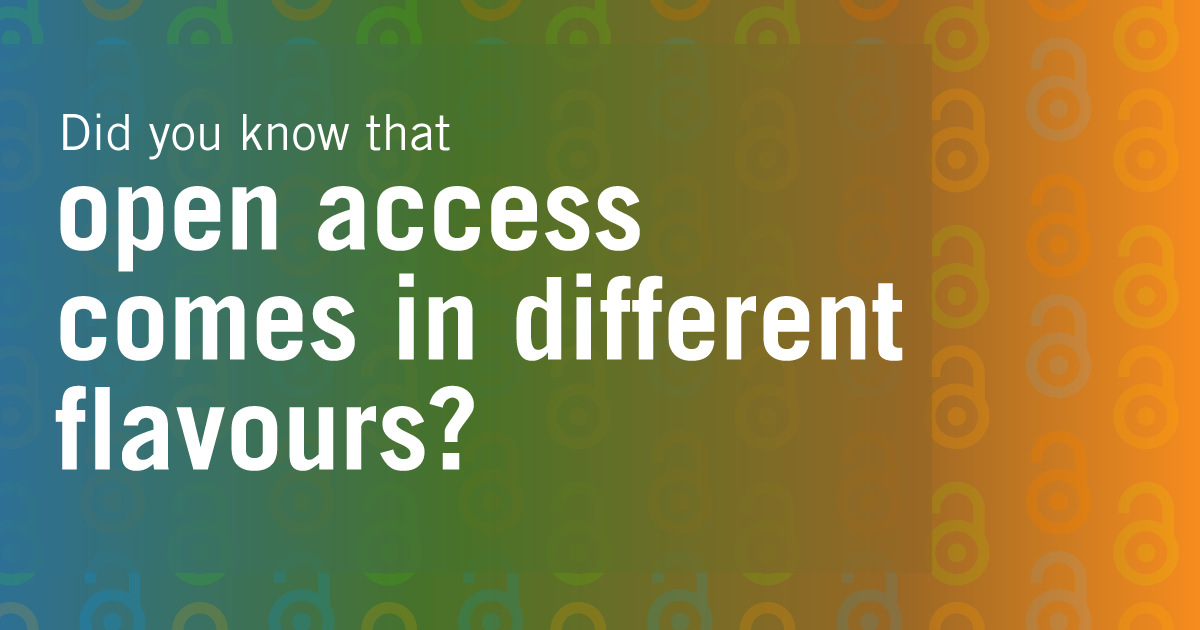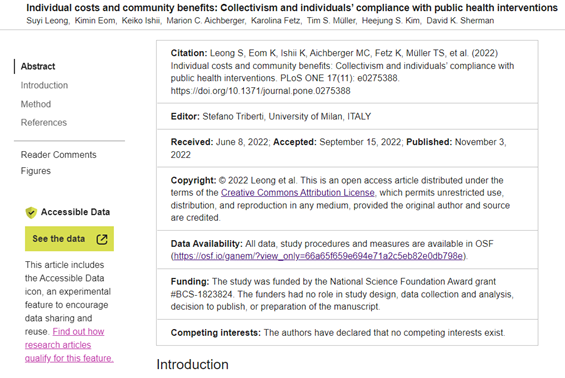
By Yeo Pin Pin, Head, Research Services
You might think that if the paper is free to read it is open access. You would be right, for the reader it is straight forward. The definition of open access is:
“By ‘open access’ to this literature, we mean its free availability on the public internet, permitting any users to read, download, copy, distribute, print, search, or link to the full texts of these articles, crawl them for indexing, pass them as data to software, or use them for any other lawful purpose, without financial, legal, or technical barriers other than those inseparable from gaining access to the internet itself. The only constraint on reproduction and distribution, and the only role for copyright in this domain, should be to give authors control over the integrity of their work and the right to be properly acknowledged and cited.” Budapest Open Access Initiative (2002).
The devil is in the details. Where are you accessing the paper? Is it on a journal website or a repository? Is there a copyright license attached to the paper? The license indicates how the user can use the paper, and Creative Commons licenses are commonly used. Most importantly, how do journals sustain themselves if they are wholly Open Access and cannot charge for subscriptions?
Gold Open Access
If you are able to read the paper for free on the journal website and there is an open license attached, it is called Gold Open Access. See an example article below with CC-BY license.

Gold Open Access Journals are journals where 100% of the papers in the journal are all Open Access. But if journals are unable to charge for subscriptions, how do they sustain themselves? There are multiple business models, but the two most common ones are APC Gold and Diamond OA.
In the APC Gold model, the journal charges authors to make the paper open access on their website. An article processing charge (APC) is paid from the author to the publisher and the paper is made open for all to read. This is mandatory for Gold Journals.
Some examples of gold open access journals where ALL the articles in each issue are made open access includes PLoS One and Scientific Reports. This is more common in the STEM disciplines and is offered by traditional commercial legacy publishers like Elsevier, Springer-Nature but also by newer OA commercial publishers like Hindawi, MDPI, and Frontiers.
Some institutions or libraries may have membership or package deals with some Open Access publishers where the APCs can be discounted or even waived.
The disadvantage of such a model besides the typically high costs of APCs is that it shuts out researchers who are not able to afford the APCs.
Diamond Open Access
The other type of journal where all the papers are Open Access is the Diamond OA journal.
For these Diamond or Platinum journals, authors do not have to pay any APC to publish. Typically, such journals have a sponsor who bears the cost and are often academic institutions or scholarly organizations. Some examples of Diamond journals are: Cybersecurity where APCs are covered by Institute of Information Engineering, and Visual Informatics where APCs are covered by Zhejiang University Press. Diamond journals are relatively more common for the Social Sciences and Humanities.
Hybrid Open Access
Most traditional journals are subscription journals. Today, most of them are also Hybrid journals. This means that the bulk of the articles in the journal are paywalled and you need a subscription to access.
However, you may find that such journals may have a few articles made Open Access. These are the articles where on acceptance, the author has decided to pay the APC and the article is made open. Note that you are not required to pay an APC and can publish in the journal the usual way behind a paywall.
Typically, the cost of the APC is borne by the individual researchers out of their own research funds but some institutions or libraries have “transformative deals” where the cost of APCs may be fully or partly borne by the institution or library. More on this in the future.
Most top tier journals from big commercial publishers have this option and some examples are: Accounting, Organizations and Society, Management Science, IEEE Transactions of Knowledge and Data Engineering.
The main disadvantage of this model is similar to that of the Gold APC model, that APCs tend to be costly. At least Hybrid journals allow publication even if the author cannot afford to pay the APC. Another issue is unless the publisher adjusts for it, there is a possibility of double dipping where libraries pay subscriptions to access the papers while authors pay an additional amount to make their papers open access.
Bronze Open Access
If you are able to read the paper for free on the journal website but do not see an open license indicated, the paper is called Bronze OA. This can often occur if the publisher decides to make certain issues free to read for short or promotion periods (e.g. during the height of the pandemic, a lot of research relating to COVID-19 was made free to read temporarily). Due to the lack of a license, the content owner can close access at any time and some opined that they cannot be considered as truly open access.
Green Open Access
If you are able to read the paper for free on a repository and there is a copyright license attached, it is called Green Open Access. The version of the paper available could vary from a submitted version (before peer review), accepted version (after peer review) or published version. A huge benefit of making a paper open access on a repository is that there are no fees for the authors. The authors and the repositories abide by the policies of the publishers as to which version of the paper can be uploaded to the repository.
We encourage SMU faculty to upload their papers into IRIS and the library will make it available as green open access in our repository InK.
Check out the chart by Van Leewen, et al (2019) that shows how to determine the type of open access.
References
Budapest Open Access Initiative.(2002). https://www.budapestopenaccessinitiative.org/read/
Creative Commons Licenses. (n.d.). https://creativecommons.org/licenses/
Van Leeuwen, T., Costas, R., & Robinson-Garcia, N. (2019). Indicators of open access publishing in the CWTS Leiden Ranking 2019. https://www.cwts.nl/blog?article=n-r2w2a4